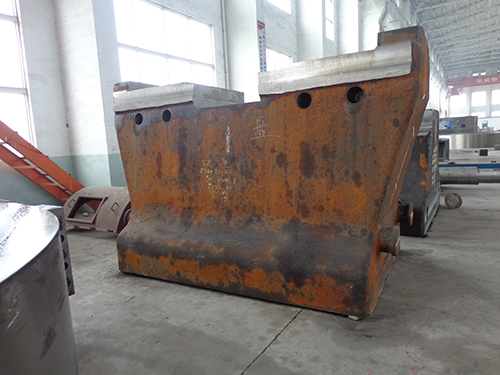why steel anvil block are so shaped?
Over the centuries, the common shape of the anvil has evolved from a simple slab to the shape most of us associate with an anvil today, namely the “London Pattern”, which became common in the 1800s. While the length and overall size of the various elements can vary from anvil to anvil, the key features of the “standard” design are typically a horn, a step, a face, a hardy hole, and a pritchel hole. The primary use of these various elements is as follows:

The horn is the “front” end of the anvil block which is curved. This allows the smith to hammer different curves into the piece they are working on, with the precise curve depending on how and what part of the horn they hold the piece on while they hammer it. Some anvils also come with multiple horns, of differing shapes and sizes.
The step is the flat area next to the horn, just below the face. This is often used as the cutting area, using the edge of the step to “cut” a piece while hammering it. However, frequent use of the step for this purpose can also damage it, so the use of tools attached to the anvil for cutting is often preferred for non-hobbyists.
The face is the main large flat slab where most of the hammering takes place. It also contains the hardy hole and the pritchel hole. Unlike the step, it often features slightly rounded edges so that the edges don’t cut into the metal being pounded on the face.
The hardy hole is a square hole through the anvil that allows you to secure various tools in the anvil. These tools can include chisels, various swages (used for shaping or marking the metal, generally a block of metal with a recess for forcing the metal into the shape of the recess), bickerns (smaller, specialized versions of the horn), etc. The hardy hole can also be used directly for an aid in bending or in hole punching.
The pritchel hole is a round hole meant as an aid in punching holes through the metal you’re working on, but obviously the hardy hole can be used for this as well as mentioned. The pritchel hole can also be used for holding tools. So, basically, the pritchel hole is a round version of the hardy hole.
